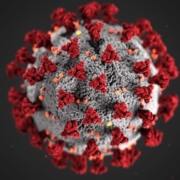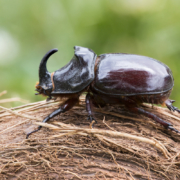Chlorpyrifos registrations to be canceled by California EPA
The original article was published by Vegetable Growers News on May 9, 2019 and can be found here.
The California Environmental Protection Agency (CalEPA) said May 8 its Department of Pesticide Regulation (DPR) would ban the use of the pesticide and toxic air contaminant chlorpyrifos in California by canceling the pesticide’s registration.
“California’s action to cancel the registration of chlorpyrifos is needed to prevent the significant harm this pesticide causes children, farm workers and vulnerable communities,” CalEPA Secretary Jared Blumenfeld said in a news release. He added that with the cancelation comes the opportunity to develop alternative pest management practices.
The pesticide is an active ingredient in “dozens” of agricultural products used on a number of crops, according to CalEPA. Use of the pesticide in the state dropped more than 50 percent from two million pounds in 2005 to just over 900,000 pounds in 2016. It was banned from residential use in 2001.
Chlorpyrifos has been used as a pesticide since 1965 in both agricultural and non-agricultural areas:
- The largest agricultural market for chlorpyrifos in terms of total pounds of active ingredient is corn.
- It is also used on soybeans, grapes, fruit and nut trees, Brussels sprouts, cranberries, broccoli and cauliflower, as well as other row crops.
- Non-agricultural uses include golf courses, turf, green houses, and on non-structural wood treatments such as utility poles and fence posts. It is also registered for use as a mosquito adulticide, and for use in roach and ant bait stations in child resistant packaging.
Products are sold as liquids, granules, water dispersible granules, wettable powders, and water soluble packets, and may be applied by either ground or aerial equipment.
CalEPA and the California Department of Food and Agriculture (CDFA) also announced that the Governor will propose $5.7 million in new funding in the May revision budget proposal to support the transition to safer, more sustainable alternatives, and plans to convene a working group to identify, evaluate and recommend alternative pest management solutions.
The decision to ban chlorpyrifos follows recent findings by the state’s independent Scientific Review Panel on Toxic Air Contaminants, that the pesticide causes serious health effects in children and other sensitive populations at lower levels of exposure than previously understood. The effects include impaired brain and neurological development.
In April, chlorpyrifos was formally listed as a “toxic air contaminant.” The listing requires DPR to develop control measures to protect the health of farmworkers and others living and working near where the pesticide is used. DPR determined that sufficient additional control measures are not feasible.
DPR said it would begin the process of canceling the registrations for products containing chlorpyrifos, and at the same time would convene a cross-sector working group to identify safer alternatives to avoid replacing chlorpyrifos with an equally harmful pesticide.
DPR will consult with county agricultural commissioners and local air pollution control districts before filing for cancellation. The cancellation process could take up to two years.
During the cancellation process, DPR’s recommendations to county agricultural commissioners for tighter permit restrictions on the use of chlorpyrifos will remain in place. These include a ban on aerial spraying, quarter-mile buffer zones and limiting use to crop-pest combinations that lack alternatives. DPR will support aggressive enforcement of these restrictions.
DPR and CDFA will convene a cross-sector working group to identify and develop safer and more practical and sustainable alternatives to chlorpyrifos, including the use of biological controls and other integrated pest management practices. They will also partner with growers as they transition from using chlorpyrifos to implement safer alternatives.
In addition, the Governor’s May Revision budget proposal includes millions of dollars for research and technical assistance to support the transition. In combination, the working group and funding for alternatives will produce short-term solutions and prioritize the development of long-term solutions to support healthy communities and a thriving agricultural sector.
“We look forward to working with the Legislature through the budget process on the Governor’s proposal to support growers in the transition to alternative pest management,” CDFA Secretary Karen Ross said in a news release.







